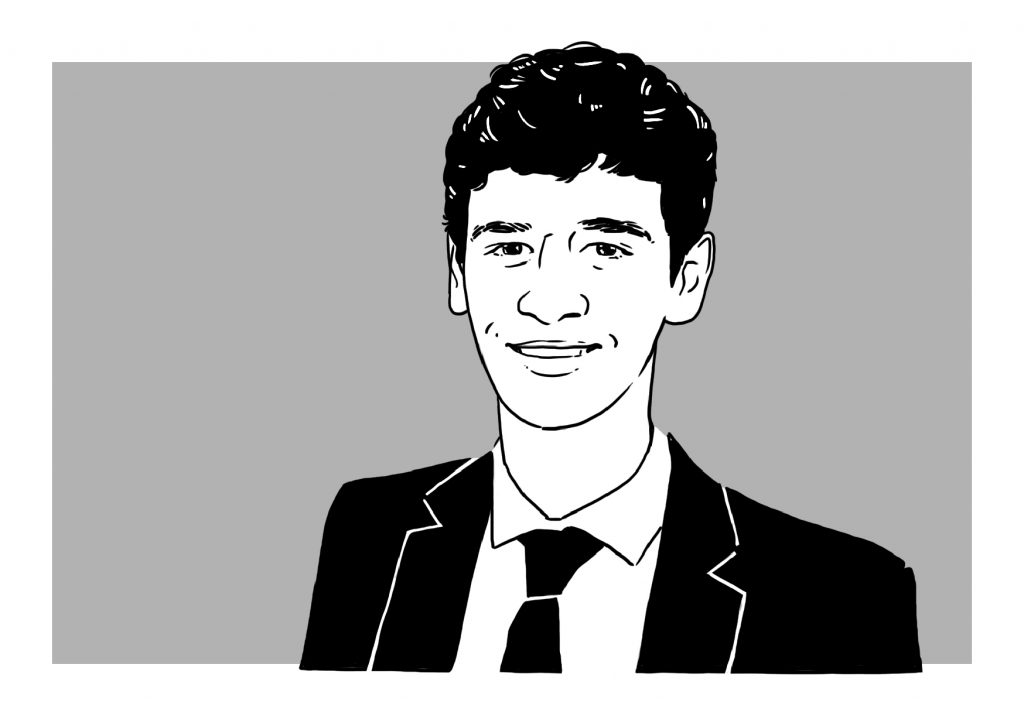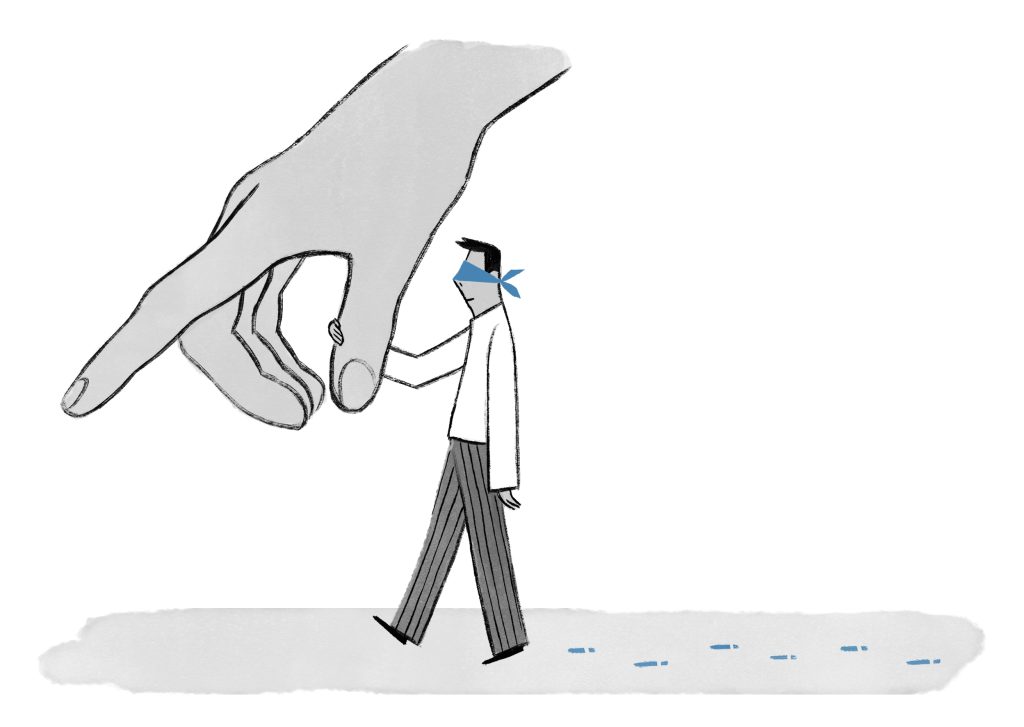This article aims to discuss the mechanics of selective attention and if and how policy makers use this psychological concept by design. Selective attention, as well as its propensity to limit reasoning to the objects one gets exposed to, may make it feasible for authoritative actors to drive the attention of the public toward a common theme, idea, or understanding. Such ideas are studied in marketing fields but are not widely proclaimed to the public in a policy context.
The dawn of marketing
In the 20th century the development of what came to be called “marketing” was focused on the commercial and private spheres. Tanner and Raymond highlight four relevant concepts in their seminal textbook “Principles of Marketing” (2010):
- Selective perception: the process whereby a person filters information based on how relevant it is to them.
- Selective retention: the process whereby a person retains information based on how well it matches their values and beliefs.
- Shock advertising: advertising designed to startle people so as to get their attention.
- Subliminal advertising: advertising that is not apparent to consumers but is thought to be perceived subconsciously by them.
These concepts do not relate only to products or services from the private sector – they are broad and their rationale works for the human being. Over the past decades, diverse companies and educational institutions prioritize marketing courses and research.
Naturally, a non-persuasive advertisement will not drive sales up and aspects of those marketing principles are prone to be transported towards public policy and politics. From now on, the word “marketing” will be at times replaced by “politics”, “policy”, “campaign” or other vocabulary related to the context.
In the case of subliminal and shock marketing, the success is influenced by the fact that the target is not aware of the intentions behind the campaign. Considering this, it is valuable to direct some attention towards the public sector. In the 2007 award winning book “The Shock Doctrine”, Naomi Klein displays a series of examples of occasions when something startling to the public provided a window for governments to adopt authoritarian postures.
From Naomi’s conclusions, it is possible to read that any strategy based on exploiting the window of opportunity opened by a traumatic shock relies heavily on the element of surprise. A state of shock, by definition, is a moment when there is a gap between fast-moving events and the information that exists to explain them.
The essence we would like to capture refers to the operation of techniques or facts that are effective over the human brain to define individual opinions and whose existence is not brought to the awareness of the citizen. The effectiveness of such techniques was (and is) verified through objective means and numerous studies, and preys on the naturally limited attention of humans. .
Selective attention as a fact
Through a series of developments that occurred in the last decades, the boundaries of the human attention span are more and more known by specialists.It is sufficient for the purpose of this work to point out that the number of objects about which a citizen usually focuses their attention is reduced and does not account for all the data available through the internet or other research means. The most relevant information sources are frequently related to daily life, media platforms and social relations.
As Schwartzstein (2014) points out, “selective attention may lead people to form persistent and systematically incorrect beliefs about what causes variation in the data.” Considering the previous insight related to the use of marketing principles, the ideas and data displayed in the most attractive or visible way is more likely to influence consumers of that information.
Schwartztein’s study also points out that once some agent forms a belief under a context of selective attention, the mere exposition to missed information is not enough to immediately change the new belief: “A further insight is that false beliefs resulting from selective attention are robust in that even if an agent can credibly communicate the importance of a variable that the other has selectively failed to notice, then, following such “debiasing”, it will still take the agent time to learn to incorporate information about that variable in making predictions, since he did not keep track of it before, and to mitigate his misreaction to associated variables.”. In summary, it is harder to “convert” anybody once they are convinced about some belief.
Therefore the topics related to politics and public policy are also subject to the influence and limitations derived from selective attention. Both public and private sectors naturally devote immense budgets to advertising campaigns, aiming to access these privileged limited places in the minds of the citizens.
From nudging to pulling
In the past years, “nudging” has appeared as a standard content of public management. It consists of tactics that favor a determined behavior without limiting the freedom of agents, such as placing messages/signals in strategic places that suggest a preferred path.
A good nudging practice is not arbitrary, as Sunstein (2014) defines, “for all policies, including nudges, it is exceedingly important to rely on evidence rather than intuitions, anecdotes, wishful thinking, or dogmas. The most effective nudges tend to draw on the most valuable work in behavioral science (including behavioral economics), and hence reflect a realistic understanding of how people will respond to government initiatives.”. In short, grounds are needed to justify nudging campaigns – preferably grounds that are prone to be explained to the wide public in case it is necessary.
A core trait of the nudging practices dwells on using the power of suggestion. It is a widely known way of directing people’s behavior without taking out the power of choice. Common nudge examples are the footsteps drawn in airports’ floors to guide passengers towards the baggage claim area or signals containing phrases like “thank you for not smoking”.
What would be the next level of seeking compliance after nudging? In the absence of a previously existing theoretical label, we will call it “pulling”. That choice is justified by the fact that each “pull”, little by little, moves the target towards a determined direction regardless of their will. This differentiates “pulling” from “nudging”.
Pulling could mean an enhanced version of nudging (i.e. more “cues”) summed up with the coordinated effort to halt, remove or silence indications about possible alternative behaviors. It is a more aggressive means of seeking an agreement upon political issues or compliant behaviors regarding public policies, and one that does not work well in democracies.
Prequel, a layer before the policy starts
In “The Politics of Attention”, Jones and Baumgartner (2007) analyze the fact that as the policies move through the political realms, information is more and more disregarded. At the end, the final policy fails to address relevant aspects of the problem.
As Jones and Baumgartner point out, key elements of policies are lost when they are discussed. In the long run, a few aspects are chosen as the focus and the rest is not addressed properly. Thus, there are issues on how governments prioritize problems and, after the priorities are set, there are issues on how they are being “sold” to the citizens.
Putting the pieces together: is there a rabbit hole?
“Although everybody now is talking only about Ukraine, the pandemic is not over”. With some variations in the wording, this sentence is repeated frequently when there is an intention to bring back some restriction or cautious behavior grounded on health. Is it a coincidence that the public’s collective attention shifts subtly from one point to another – or is it perhaps the natural consequence of good journalism based on a consensual trend about what is good news?
This article does not aim at providing final answers, nevertheless in the case that the collective attention span is driven from one side to another, making use of marketing principles that directly influence consumer choice alternatives would suggest something beyond, and far less acceptable than, nudging.
Policy makers shift the citizenry’s attention toward different points every day. This is simply part of any policy-making activity (think about it for a moment). The issue is spotting the blurred line which distinguishes when you are being manipulated; until we reach a consensus about the criteria, this remains as a subjective feeling and a very disturbing one.

Victor is a Master of Public Policy student at the Hertie School. He holds a BSc in Law from UFSC in Brazil ’15. He has experience as lawyer and parliamentary advisor. Victor is interested in leadership and in the policy process. He enjoys podcasting and debating as well as long conversations about literature and movies. Tennis and chess games may be welcome sometimes.
Views expressed by the author(s) do not represent the Hertie School.
